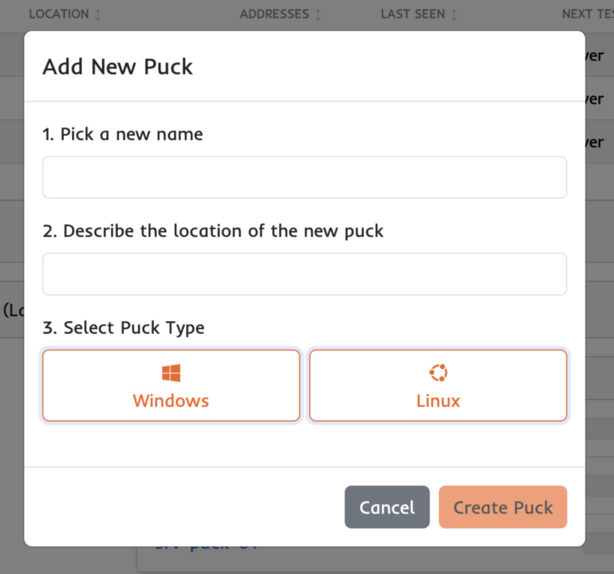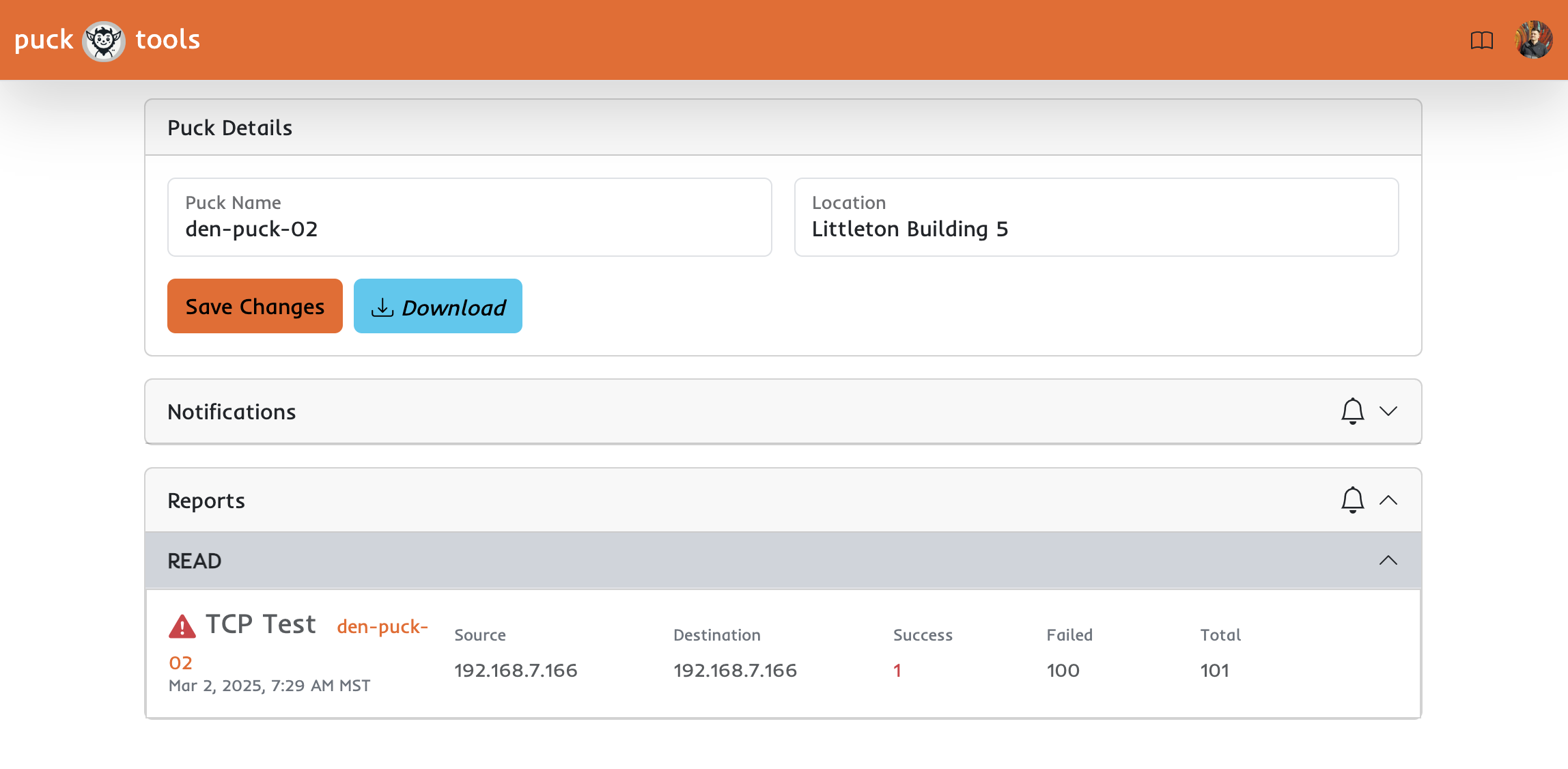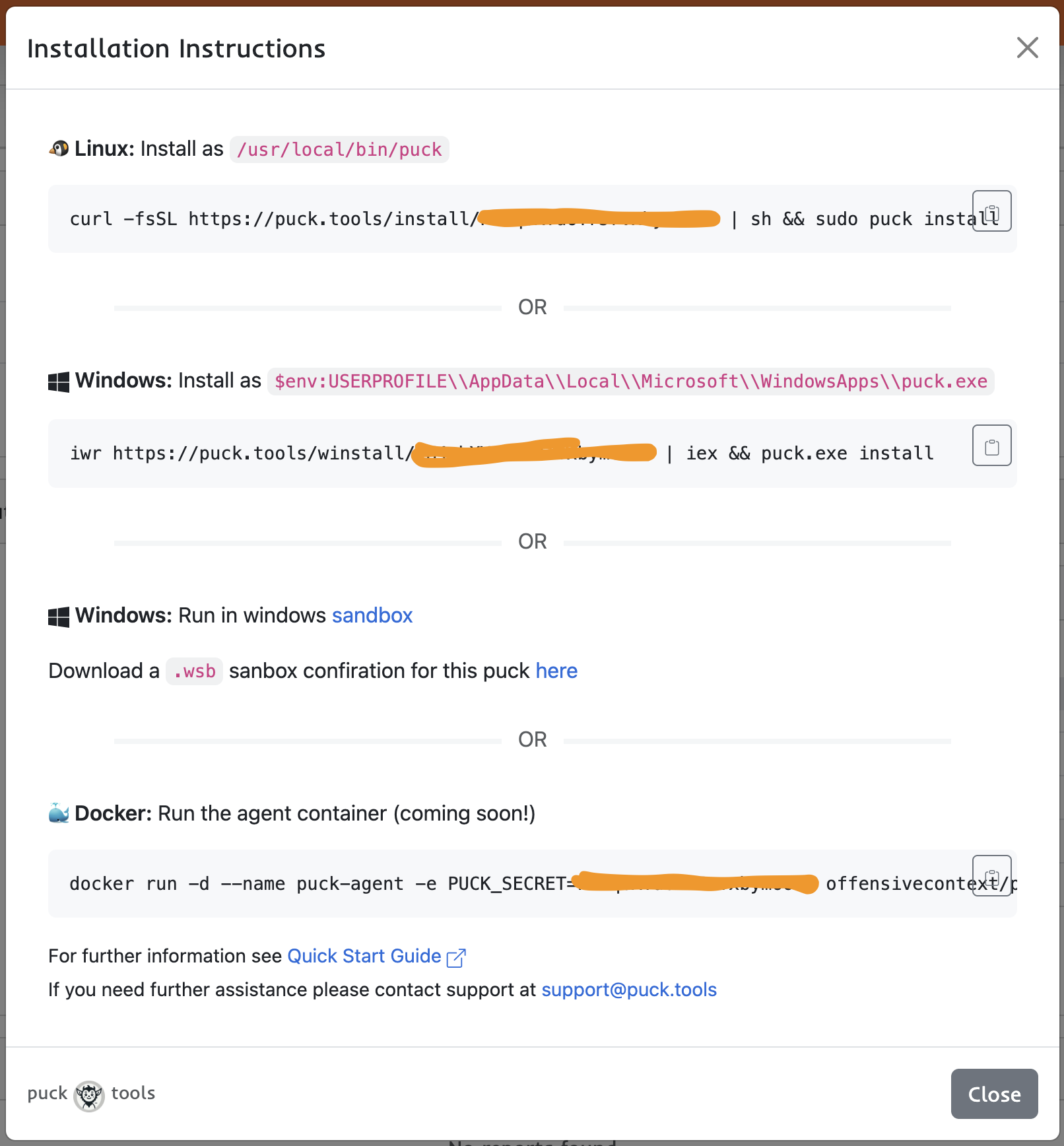Quickstart Guide
Puck tests outbound network protections. Drop a puck in your network and it begins testing egress paths using protocols often abused by malicious actors. If any leaks are found you get an alert, easy, one less thing to worry about.
The default subscription entitles you to.
- 5 deployable pucks
- 5 additional users
See Managing Subscription to learn how to increase your puck count or invite users to your organization.
Puck currently supports x86_64 Windows 11 and systemd based Linux distrubutions. (Ubuntu, Debian, Fedora, etc)
New Pucks
Deploying new pucks is a simple process.
-
From your dashboard click the "New Puck" button.
-
Setup your puck "Create Puck"
- Pick a new name
- Describe your new puck

-
Select your new puck and from the Puck Details Page follow the install instructions for your desired platform.

-
Deploy Depending on your puck type these steps will differ. As pucks have unique identifiers and cryptographic keys, ensure you only deploy each puck in one location.

More details
Check out the Understanding Puck page for more details.